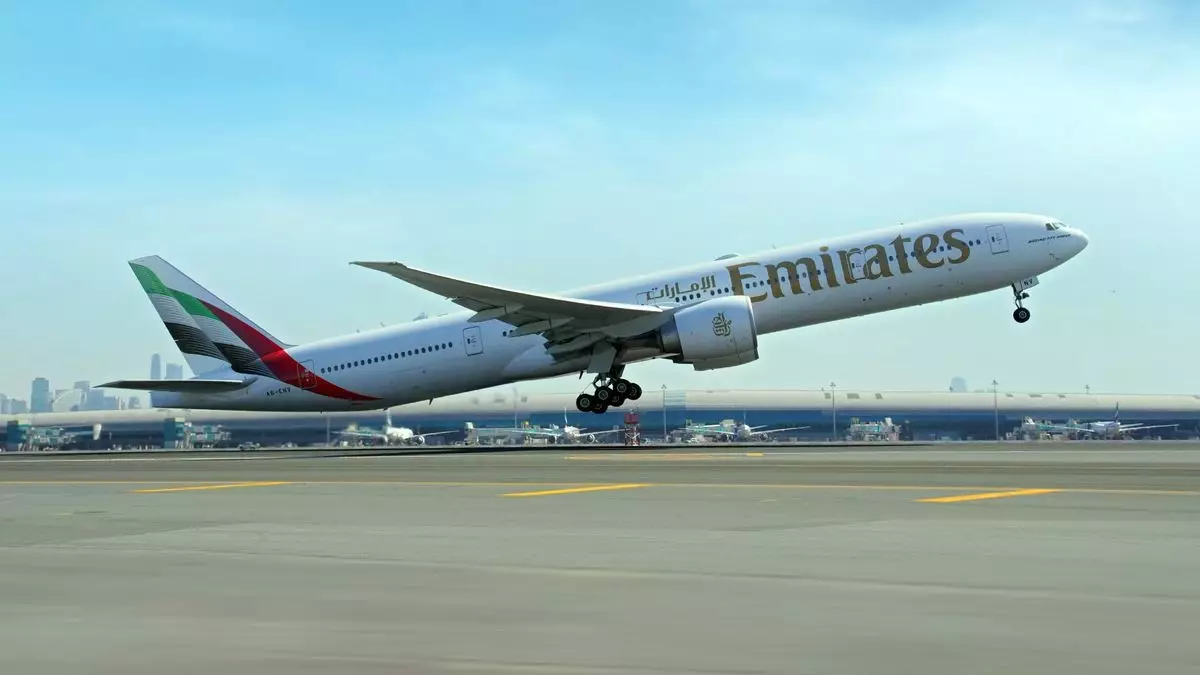In today’s globally interconnected world, the dynamics of air travel are heavily influenced by geopolitical events. Recent conflicts in the Middle East, particularly tensions between Iran and Israel, have caused significant disruptions in air travel patterns. Despite a ceasefire announced on June 25, many airlines continue to circumvent Iranian airspace, leading to longer travel times for passengers heading to the Gulf states and beyond. This curious aversion to Iranian airspace, even when technically open, highlights the indelible mark that geopolitical instability leaves on the aviation industry.
Travelers are feeling the brunt of these choices, as various carriers adjust their routes to avoid potential conflict zones. Instead of taking direct paths that would ordinarily make sense, airlines are opting for longer routes, primarily flying north over Turkey or south across Egypt and Saudi Arabia. Ian Petchenik, director of communications at Flightradar24, notes that airlines such as Emirates, Qatar Airways, and even Air India are particularly affected. These alterations not only add substantial travel time—often between 45 to 90 minutes—but also create a ripple effect of congestion on these alternate routes.
The Challenge of Navigating Congestion
As airlines recalibrate their paths to avoid Iranian airspace, one notable consequence is the congestion that arises on the newly favored routes. Air traffic controllers in affected regions face the daunting task of managing increased flight volumes while ensuring safe and timely arrivals and departures. Fortunately, initial reports indicate that these controllers are successfully mitigating congestion, allowing airlines to maintain reasonably on-schedule operations.
John Grant, an analyst at OAG, points out that it’s crucial for airlines to build flexibility into their schedules, especially when deviations from standard routes become unavoidable. Carriers are rising to the occasion, leaving adequate turn times at both departure and arrival airports. Such strategic maneuvering is vital for sustaining service reliability, a critical factor in passenger satisfaction.
Airlines’ Strategic Adaptations and Responses
It is essential to commend how swiftly airlines have adapted to these challenges. For instance, Emirates Airlines has crafted an effective contingency plan, swiftly responding to operational disruptions caused by geopolitical tensions. Following a missile attack from Iran targeting the U.S. Al Udeid Air Base in Qatar, Emirates reported only a minor number of flights experiencing extended journey times. This agility reflects not only effective crisis management but also an inherent resilience within the airline industry.
Some carriers, however, face more complicated scenarios. Air India, for example, finds itself unable to utilize Iranian airspace and also grappled with restricted routes over Pakistan earlier in the year. This dual challenge forces the airline to constantly reevaluate its operational strategy. A resume of U.S. flights on June 25 doesn’t indicate a seamless transition; rather, it emphasizes the fluctuating nature of air travel during these tumultuous times.
Travel Demand in a Shifting Landscape
As airlines continue to adapt their flight paths and schedules, a pressing question remains: how will these geopolitical tensions influence travel demand in the Middle East? With Tel Aviv airport once again operational, one would expect a resurgence in passenger numbers. However, the suspension of various U.S. flights into Israel, coupled with risks associated with potential future conflicts, leaves uncertainty looming over traveler sentiment.
Jens Flottau, executive editor of commercial aviation for Aviation Week, predicts a probable dip in demand across the region due to the recent instability. Despite this temporary hurdle, there remains optimism about the long-term viability of Middle Eastern air travel hubs as effective connecting points for international travelers. The resilience of these hubs will be tested as the situation stabilizes, but their geographical and logistical advantages cannot be overlooked.
Ultimately, while safe and efficient travel may be temporarily sidelined by such geopolitical conflicts, the adaptability of airlines in the face of adversity showcases the industry’s dedication to maintaining crucial global connections. It becomes vital for travelers and industry stakeholders alike to remain cognizant of how unfolding events shape air travel and the strategies airlines deploy to keep the skies as seamless as possible.

